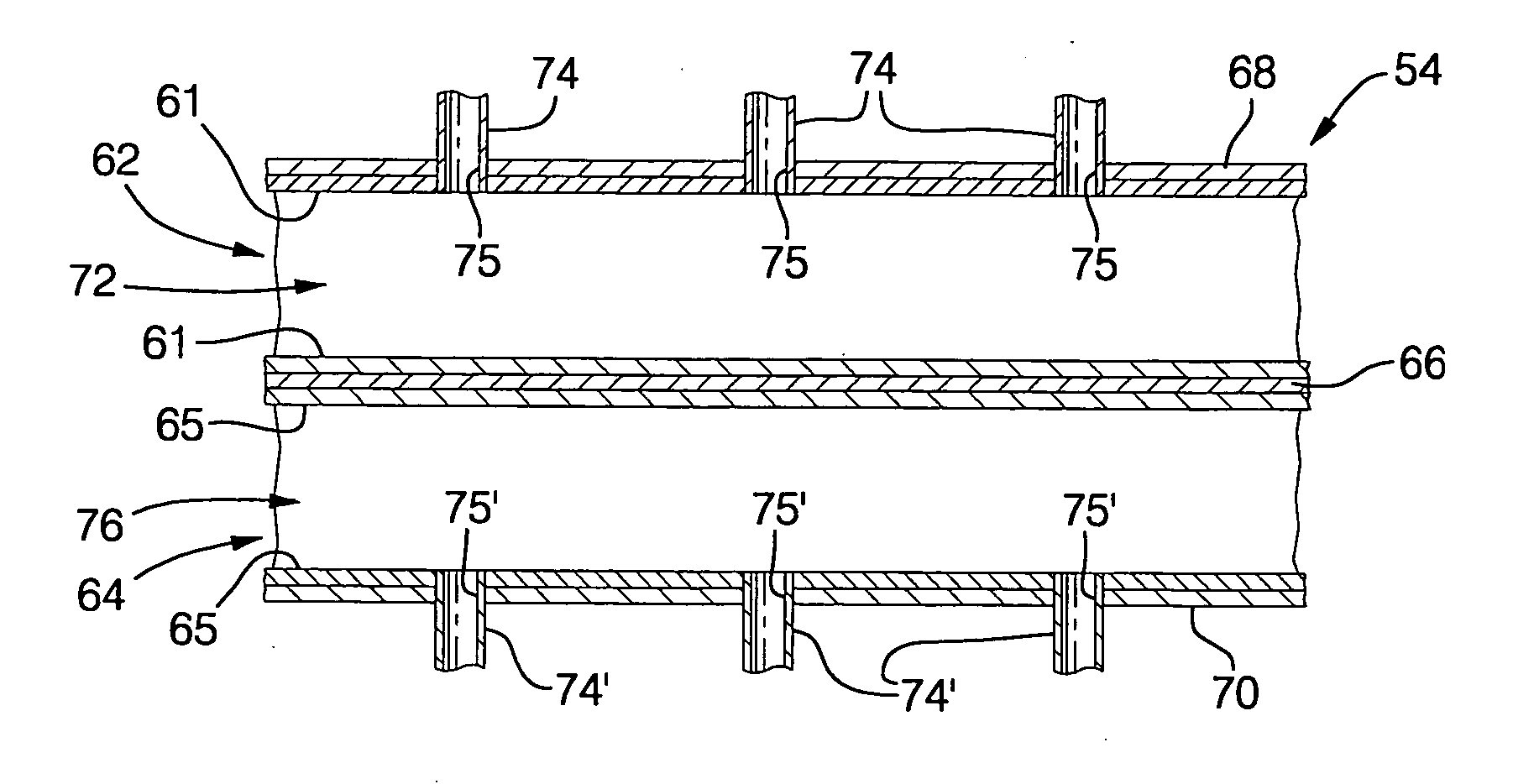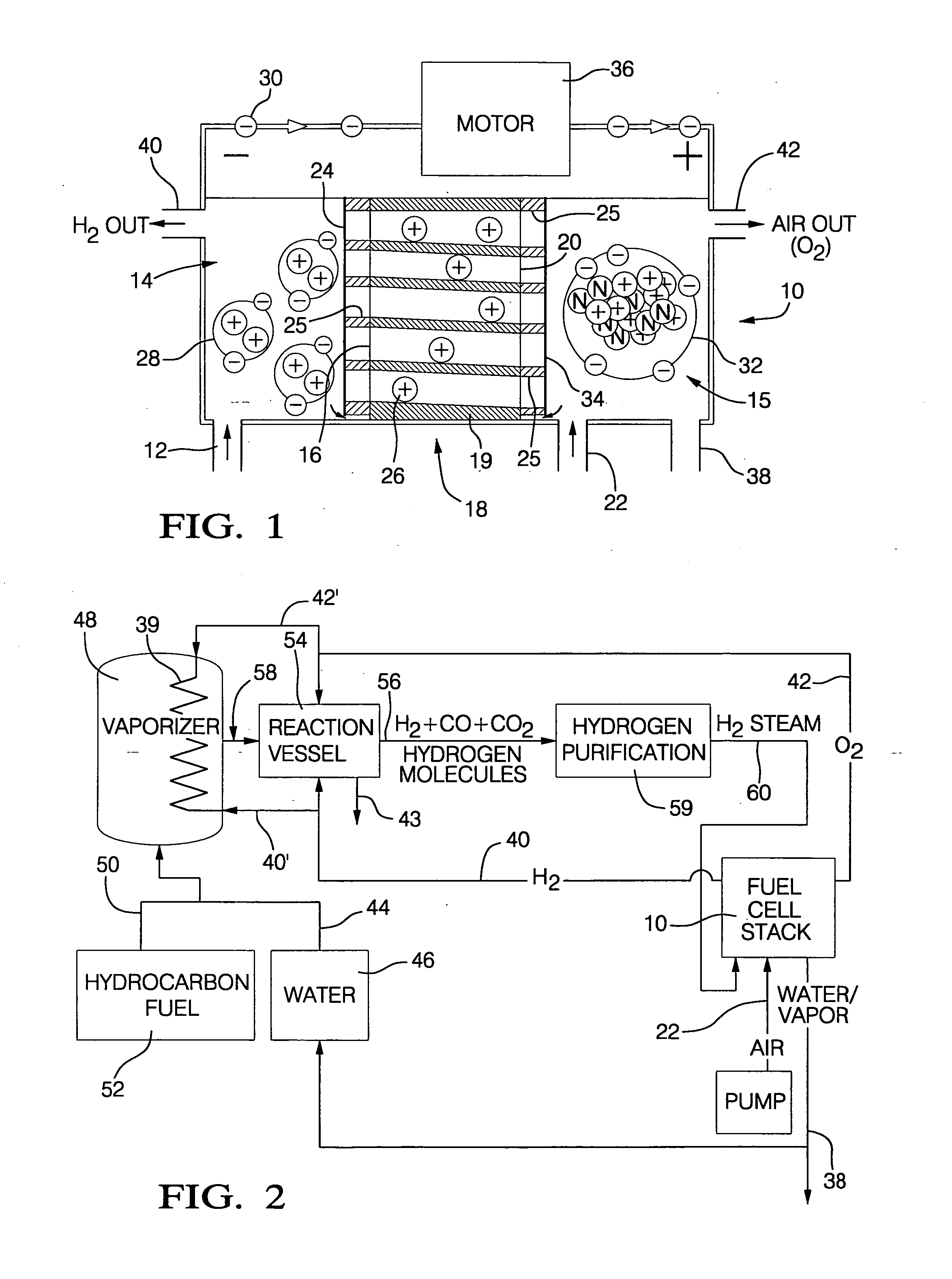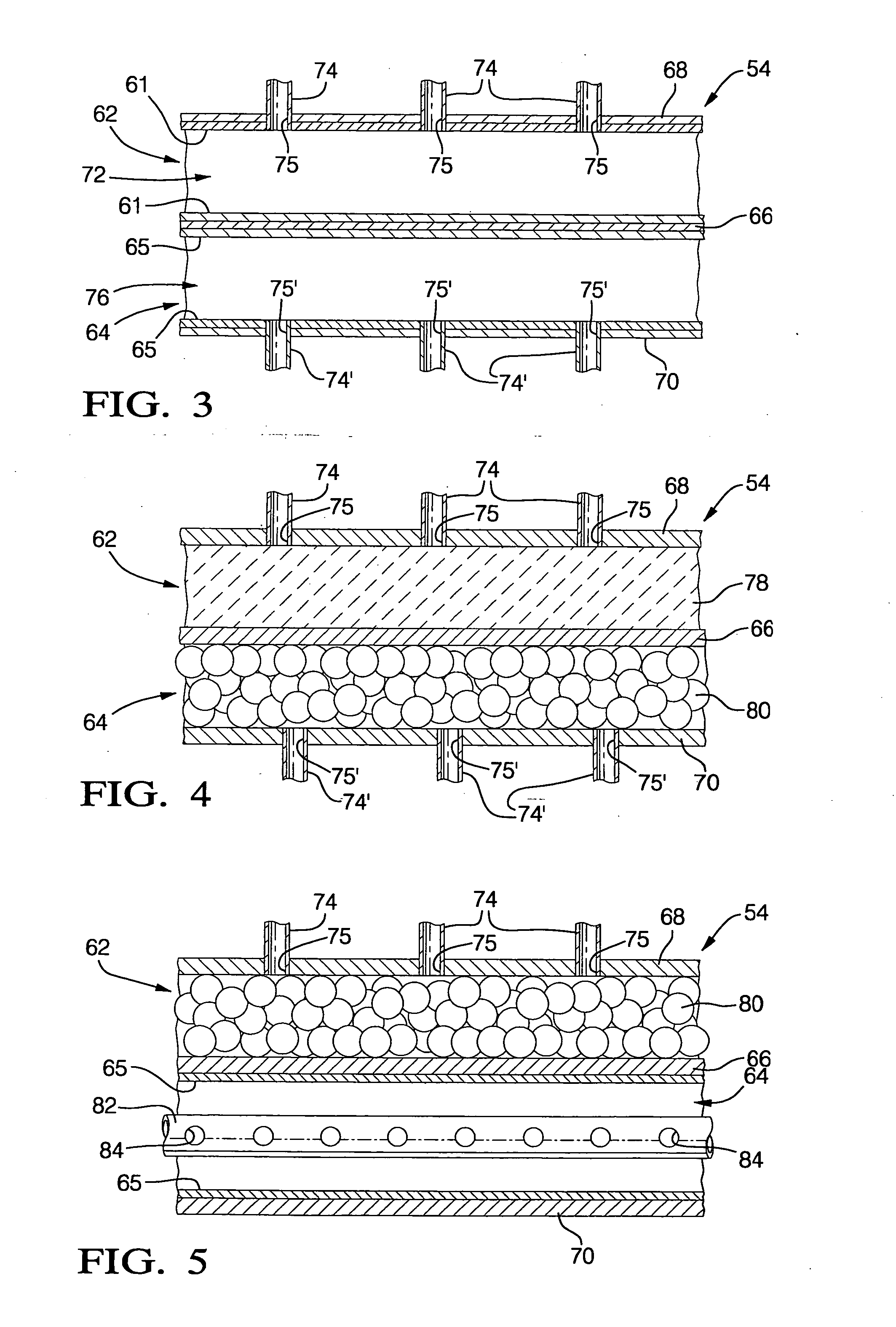Multiple stage combustion process to maintain a controllable reformation temperature profile
a technology of reformation temperature and combustion process, applied in the field of fuel cell systems and components, can solve the problems of endothermic reformation process, inapplicability, and limited fuel cell development, and achieve the effect of more uniform and/or controllable heat generation and exchange, uniform and/or controllable temperature profile, and added to the overall mass and volume of the fuel cell system
- Summary
- Abstract
- Description
- Claims
- Application Information
AI Technical Summary
Benefits of technology
Problems solved by technology
Method used
Image
Examples
Embodiment Construction
[0034] Referring now to FIG. 2, the fuel cell system according to the present invention includes a fuel cell (or fuel cell stack) 10. The system may also include the following auxiliary equipment to support the fuel cell stack 10. Water is provided and held in a water reservoir or holding tank 46 which is connected to a vaporizer 48 by water line 44. A fuel source is provided and held in a tank 52 that is also connected to the vaporizer 48 by line 50. Preferably the fuel used is methanol, gasoline, diesel, methane and the like. The fuel and water may be vaporized by any method known to those skilled in the art, but preferably the heat for the vaporization step is supplied by a heat exchanger 39 in the vaporizer that catalytically combusts hydrogen 40′ and oxygen 42′ from the fuel cell stack 10 exhaust. Alternatively, the vaporizer may be included as an integral part of the reaction vessel 54 as will be described hereafter. The fuel and water are vaporized together (or may be vaporiz...
PUM
| Property | Measurement | Unit |
|---|---|---|
| pressure | aaaaa | aaaaa |
| temperature | aaaaa | aaaaa |
| temperature | aaaaa | aaaaa |
Abstract
Description
Claims
Application Information
 Login to View More
Login to View More - R&D
- Intellectual Property
- Life Sciences
- Materials
- Tech Scout
- Unparalleled Data Quality
- Higher Quality Content
- 60% Fewer Hallucinations
Browse by: Latest US Patents, China's latest patents, Technical Efficacy Thesaurus, Application Domain, Technology Topic, Popular Technical Reports.
© 2025 PatSnap. All rights reserved.Legal|Privacy policy|Modern Slavery Act Transparency Statement|Sitemap|About US| Contact US: help@patsnap.com



